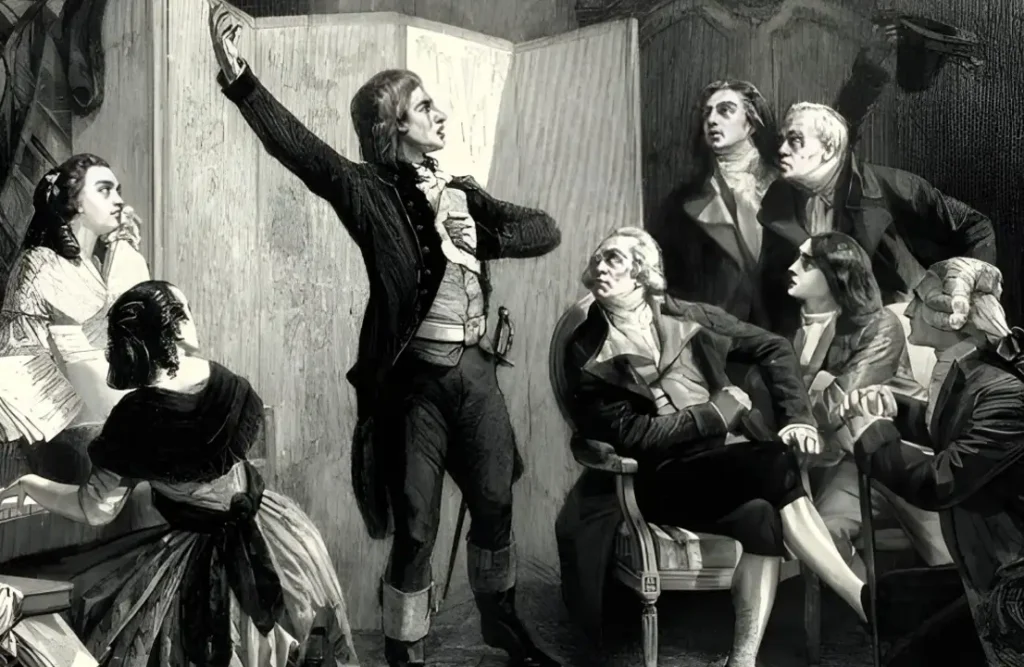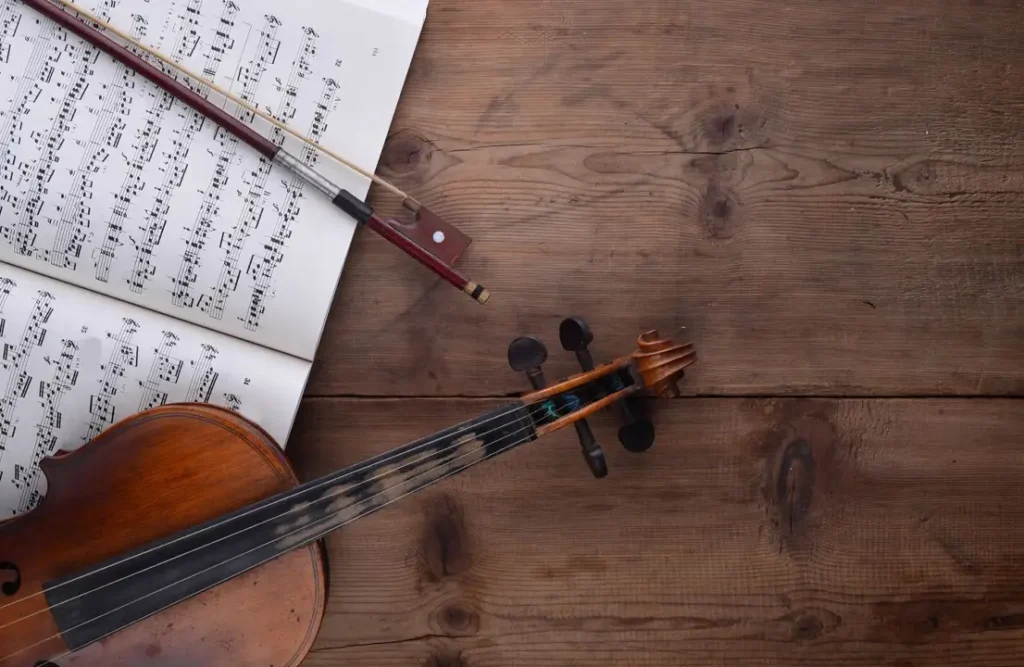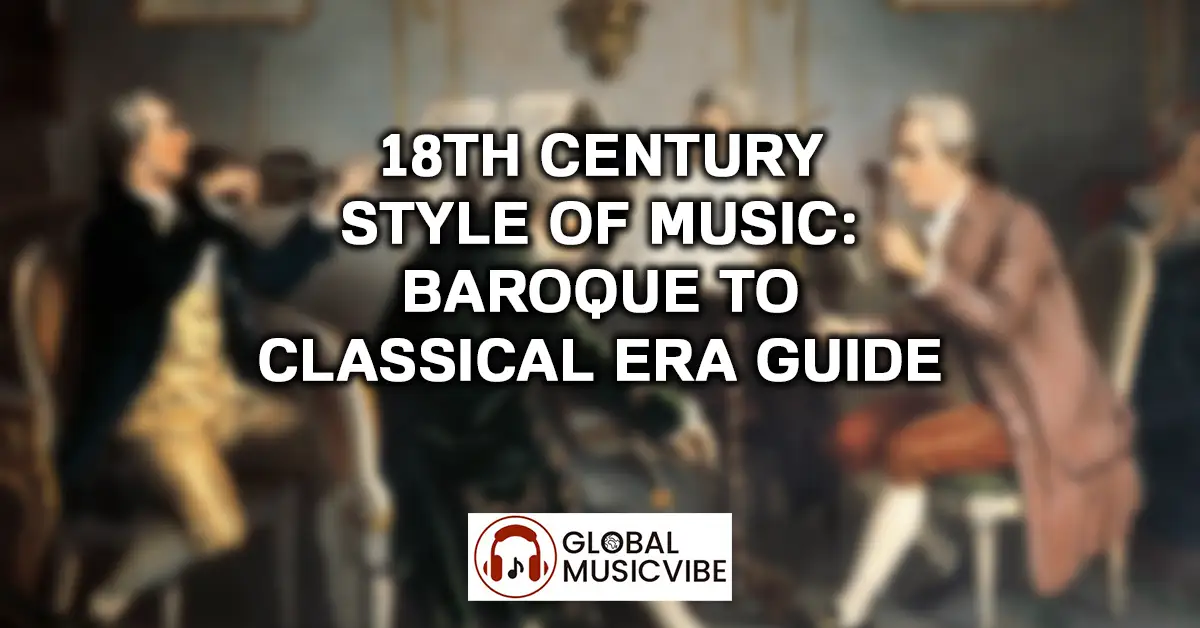The 18th century style of music represents one of history’s most remarkable periods of musical evolution, characterized by dramatic shifts from ornate Baroque complexity to refined Classical elegance. This distinctive 18th century style of music encompassed revolutionary compositional techniques, innovative instrumental developments, and profound changes in musical aesthetics that continue to influence contemporary music creation and performance.
Defining Characteristics of 18th Century Style of Music

The 18th century style of music evolved through distinct phases, each with unique characteristics that reflected broader cultural and social transformations. Early in the century, the late Baroque style dominated, featuring intricate counterpoint, elaborate ornamentation, and complex harmonic structures that demanded exceptional technical skill from performers.
As the century progressed, the 18th century style of music gradually embraced greater simplicity and accessibility. The galant style emerged as a reaction against Baroque complexity, emphasizing clear melodic lines, lighter textures, and more straightforward harmonic progressions that appealed to expanding middle-class audiences.
The Classical period, which defined the latter half of the 18th century style of music, established principles of balance, proportion, and formal clarity that became foundational to Western musical tradition. This stylistic evolution reflected Enlightenment ideals of reason, natural expression, and universal accessibility.
Key elements that defined the 18th century style of music included the development of sonata form, the standardization of orchestral instrumentation, and the emergence of the piano as the dominant keyboard instrument. These innovations created a musical language that was both sophisticated and comprehensible to diverse audiences.
Bach and the Culmination of Baroque 18th Century Style of Music
Johann Sebastian Bach epitomized the mature Baroque phase of 18th century style of music, creating works of unparalleled complexity and spiritual depth. His compositional approach combined mathematical precision with profound emotional expression, establishing techniques that influenced subsequent generations of composers.
Bach’s contribution to the 18th century style of music included masterful use of counterpoint, where multiple independent melodic lines interweave to create rich harmonic textures. His Well-Tempered Clavier demonstrated the possibilities of equal temperament tuning, enabling composers to explore all major and minor keys with equal facility.
The sacred dimension of Bach’s work represented a crucial aspect of early 18th century style of music. His cantatas, passions, and organ compositions elevated functional religious music to artistic heights that continue to inspire modern listeners. Contemporary audiences can fully appreciate the intricate details of Bach’s polyphonic writing through high-quality audio equipment that reveals the subtle interplay between voices.
Bach’s instrumental compositions, including the Brandenburg Concertos and various suites, showcased the technical capabilities of period instruments while establishing forms that would influence the developing 18th century style of music. His keyboard works pushed the boundaries of what was technically possible on harpsichord and early piano.
The Galant Revolution in 18th Century Style of Music
The mid-century transformation of 18th century style of music toward the galant aesthetic marked a decisive break with Baroque traditions. This new approach prioritized elegance, clarity, and immediate emotional appeal over the intellectual complexity that had characterized earlier compositions.
Carl Philipp Emanuel Bach, Johann Sebastian’s son, played a pivotal role in developing this new 18th century style of music. His keyboard works emphasized expressive melody supported by simple accompaniment, creating a more accessible musical language that reflected changing social values and performance contexts.
The galant 18th century style of music coincided with the growth of domestic music-making, as families increasingly gathered around keyboard instruments to perform compositions that required less technical training than their Baroque predecessors. This democratization of musical participation significantly influenced compositional approaches and publishing practices.
This stylistic shift also reflected broader cultural movements toward naturalism and emotional authenticity. The 18th century style of music began to prioritize direct communication with audiences over displays of compositional virtuosity, setting the stage for the Classical period’s systematic approach to musical expression.
Mozart’s Perfection of Classical 18th Century Style of Music
Wolfgang Amadeus Mozart achieved the ideal synthesis of technical mastery and expressive immediacy that defined the mature 18th century style of music. His compositions demonstrate perfect balance between formal sophistication and melodic accessibility, creating works that satisfy both casual listeners and musical scholars.
Mozart’s piano sonatas and concertos established new standards for the 18th century style of music, exploiting the piano’s dynamic capabilities while maintaining the clarity and proportion valued by Classical aesthetics. His approach to piano writing influenced instrument design and performance technique throughout the period.
The composer’s operatic works represent the culmination of 18th century style of music in dramatic contexts. Operas like The Marriage of Figaro and Don Giovanni successfully merged Italian melodic traditions with German harmonic sophistication, creating psychologically complex characters through purely musical means.
Mozart’s chamber music, particularly his string quartets, elevated intimate musical genres within the 18th century style of music to the same artistic level as grand symphonic works. These compositions reveal sophisticated musical conversation between instruments that rewards careful listening through quality audio reproduction systems.
Haydn’s Structural Innovations in 18th Century Style of Music
Franz Joseph Haydn’s contributions to 18th century style of music centered on the systematic development of musical forms that became standard for Classical composition. His 104 symphonies represent a comprehensive exploration of symphonic possibilities within the stylistic parameters of the period.
Haydn’s approach to the 18th century style of music included innovative use of musical humor and surprise, employing unexpected harmonic turns, dramatic silences, and instrumental effects that delighted contemporary audiences. His compositional techniques balanced sophistication with accessibility, embodying Classical ideals.
The composer’s string quartets essentially defined this crucial genre within the 18th century style of music. Through 68 works spanning his entire career, Haydn developed the conversational potential of four-part string writing, creating intimate yet structurally sophisticated compositions.
Working for the Esterházy family provided Haydn with unusual creative freedom to experiment within the evolving 18th century style of music. This stability allowed him to refine his compositional voice while continuously pushing artistic boundaries, contributing significantly to the period’s musical development.
Instrumental Evolution and the 18th Century Style of Music

The distinctive 18th century style of music was inextricably linked to concurrent developments in musical instruments and performance practices. The gradual replacement of harpsichord by piano fundamentally altered keyboard composition, enabling the dynamic expression that became central to Classical aesthetics.
String instrument craftsmanship reached new heights during this period, with makers like the Guarneri family and Giuseppe Guadagnini creating instruments whose tonal qualities perfectly matched the expressive demands of the 18th century style of music. These instruments remain highly prized by modern performers.
Wind instrument development significantly expanded the orchestral palette available to composers working in the 18th century style of music. Improvements in key systems for woodwinds and valve mechanisms for brass instruments enabled more demanding and expressive parts, contributing to the growth of orchestral literature.
The standardization of orchestral forces during this period directly influenced the character of 18th century style of music. The establishment of string sections supplemented by pairs of woodwinds and brass created the sonic foundation for Classical symphonic composition, enabling composers to explore new possibilities in orchestral color and texture.
Social Context and the 18th Century Style of Music
The evolution of 18th century style of music reflected broader social and cultural transformations occurring throughout Europe. The decline of aristocratic patronage and the rise of middle-class musical participation created new performance contexts and audience expectations that directly influenced compositional approaches.
Public concerts became increasingly important venues for the 18th century style of music, necessitating compositions that could communicate effectively with diverse audiences. This democratization of musical experience encouraged composers to develop more accessible musical languages without sacrificing artistic sophistication.
The growth of music publishing during this period made the 18th century style of music more widely available than ever before. Standardized notation and improved printing techniques facilitated the spread of new compositions and performance practices across geographic boundaries, contributing to the internationalization of musical style.
Amateur music-making became a crucial social skill, particularly for women, driving demand for compositions suited to domestic performance contexts. This trend significantly influenced the development of keyboard literature and chamber music within the 18th century style of music, as composers balanced artistic ambition with practical performance considerations.
Many enthusiasts today explore these historical compositions through modern audio equipment, discovering nuances in the 18th century style of music that might have been less apparent on period instruments. Quality headphones and speakers reveal the intricate details that make these works enduringly fascinating to contemporary listeners.
Ready to experience Bach’s intricate polyphonic masterpieces in stunning detail? Discover the best headphones for classical music and hear every nuance of 18th century compositions as the composers intended.
Sacred and Secular Traditions in 18th Century Style of Music
Religious music maintained its importance throughout the development of 18th century style of music, though its character evolved significantly to reflect changing aesthetic priorities. While early composers like Bach maintained complex polyphonic traditions, later figures like Mozart and Haydn adopted more accessible approaches to sacred composition.
The Requiem tradition reached unprecedented heights within the 18th century style of music, exemplified by Mozart’s final masterpiece. This work demonstrates how Classical composers successfully merged profound spiritual expression with sophisticated musical craftsmanship, creating works that transcend their original liturgical purposes.
Secular music flourished as never before during this period, with the 18th century style of music embracing entertainment and emotional expression in unprecedented ways. The development of instrumental genres like the symphony and string quartet provided composers with new vehicles for artistic expression outside traditional religious contexts.
Opera underwent fundamental transformation within the evolving 18th century style of music, moving from Baroque spectacle toward more naturalistic dramatic expression. Reformers like Gluck emphasized musical drama over vocal display, while Mozart achieved perfect synthesis of musical and theatrical elements that established new standards for operatic composition.
Frequently Asked Questions
What are the main characteristics of 18th century style of music?
The 18th century style of music is characterized by a transition from Baroque complexity to Classical clarity. Key features include the development of sonata form, balanced phrase structures, clearer harmonic progressions, and the emergence of the piano as the dominant keyboard instrument. The style emphasized both technical sophistication and accessibility to broader audiences.
Who were the most important composers of 18th century style of music?
The most influential composers of 18th century style of music include Johann Sebastian Bach (representing the late Baroque), Wolfgang Amadeus Mozart and Franz Joseph Haydn (exemplifying the Classical period), and Carl Philipp Emanuel Bach (bridging Baroque and Classical styles). These composers established the foundations of Western classical music that continue to influence modern composition.
How did instruments change during the 18th century style of music period?
Instrumental development was crucial to the 18th century style of music evolution. The piano gradually replaced the harpsichord, offering greater dynamic control. String instruments reached new levels of craftsmanship, while woodwind and brass instruments underwent significant improvements in key systems and valve mechanisms, expanding their technical and expressive capabilities.
What social changes influenced 18th century style of music?
The 18th century style of music reflected broader social transformations, including the decline of aristocratic patronage, the rise of middle-class musical participation, and the growth of public concerts. These changes encouraged composers to develop more accessible musical languages while maintaining artistic sophistication, democratizing musical experience beyond court and church settings.
How does 18th century style of music influence modern music?
The 18th century style of music established fundamental principles of Western musical structure, including sonata form, symphonic organization, and harmonic progression patterns that continue to influence contemporary composers. Modern musicians can appreciate these historical works through advanced audio technology that reveals details about instrumental techniques and compositional methods that inform current musical practice.

